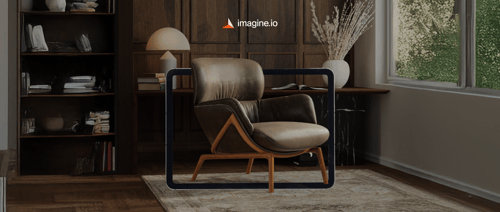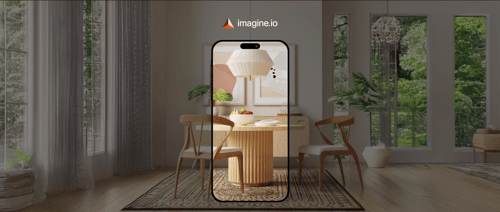Textiles tell stories. And in today’s hyper-connected, image-driven world, those stories are no longer confined to the runway. The same patterns that define fashion collections often reappear in living rooms, on throw pillows, curtains, or upholstered chairs—sometimes within the same season.
As someone who has worked in content for over a decade, I’ve seen this crossover evolve from a seasonal coincidence to a strategic design philosophy. For B2B brands in textiles, furnishings, homeware, and even retail, understanding this crossover isn't just interesting—it's essential.
In this blog, we’ll unpack how textile trends migrate from fashion to home decor, the driving forces behind this shift, and how businesses can adapt faster and smarter. We’ll also explore how technology, especially AI and 3D visualization, is making this cross-industry fluidity more efficient and scalable than ever.
Get the latest updates straight to your inbox.
By clicking sign up you'll receive occasional emails from imagine.io. You always have the choice to unsubscribe within every email you receive.
1. Fashion as the Trend Forecaster: The Domino Effect

Fashion is often the first domino to fall in the world of design trends. Textile designers working in fashion are quick to test bold ideas—be it maximalist florals, dopamine-inducing color palettes, or new surface textures.
Why does it matter for home decor?
What walks down a runway today could inspire upholstery, wall coverings, or bedding designs tomorrow. Fashion weeks in Paris, Milan, and New York are not just style events—they’re global mood boards that ripple through adjacent industries.
Forward-thinking home brands watch these events closely, pulling patterns, color palettes, and materials that align with the cultural zeitgeist. Interior designers and manufacturers then interpret these trends in ways that suit the home’s slower, more timeless design cycles.
2. The Role of Cultural and Consumer Shifts
Design doesn’t exist in a vacuum. Shifts in culture—think sustainability, digital maximalism, wellness—impact both what we wear and how we decorate our homes. Today’s consumers crave cohesive lifestyle aesthetics.
If someone is drawn to a calming, earth-toned wardrobe, chances are they’ll choose similar tones for their bedroom or workspace. Brands that bridge this lifestyle alignment create deeper emotional connections with their audience.
Case in point: The rise of “cottagecore” wasn’t just a fashion trend. It translated into mushroom motifs on ceramics, lace curtains, and vintage floral upholstery across the home decor world.
3. The Blurred Lines Between Runway and Retail Space
Modern consumers scroll Instagram, shop online, and decorate through mood boards. This behavior has blurred the once-clear boundaries between what’s “fashion” and what’s “home.”
Take luxury fashion brands like Gucci or Ralph Lauren, for example. Their textile storytelling doesn’t end at garments. Their flagship stores are styled like curated homes, and their branded homeware collections reflect the same creative DNA as their clothing lines.
This cross-pollination isn’t accidental—it's a strategy. And it’s driving a new model of visual consistency across product lines. Today, even mid-tier brands are adopting this holistic design approach.
4. Speed Matters: From Catwalk to Couch Faster Than Ever

Here’s where things get interesting for manufacturing and design teams. Traditionally, adapting a fashion trend to home décor took multiple seasons. You’d wait for the trend to prove itself, go through rounds of development, physical sampling, photoshoots, and retailer approvals.
But 3D visualization and AI-powered tools have collapsed these timelines. With platforms like imagine.io, you can:
- Visualize new textile applications across furniture, bedding, or décor items in real time.
- Test multiple colorways, weaves, or patterns without making physical prototypes.
- Roll out seasonal or limited-edition collections faster than ever—while staying visually on-trend.
Translation? You’re not just keeping up with fashion—you’re keeping pace.
5. Sustainability: A Shared Mandate
Both fashion and home decor industries are under pressure to reduce waste, increase transparency, and adopt circular design models. Textile production is a shared challenge—and a shared opportunity.
This shift has led to:
- Greater reliance on digital sampling to reduce material waste.
- More demand for visual content that communicates sustainable practices effectively.
- Increased consumer interest in upcycled materials and responsible design stories—whether it’s a jacket or a sofa.
Brands that can demonstrate their sustainability through immersive visual storytelling—like digital showrooms or 3D product experiences—stand out in a crowded, eco-conscious market.
6. Visual Content is the Currency of Trend Adoption
A trend is only as powerful as its visibility. In both fashion and home décor, visual content sells the vision. What’s changed is how that content is created and delivered. Photoshoots are expensive. Prototyping is slow. The modern solution? Hyper-realistic 3D product renders, lifestyle visuals, 360 spins, and augmented reality (AR) previews—all delivered faster with AI.
imagine.io allows creative and merchandising teams to turn textile trends into buyer-ready visuals at scale. Whether you’re launching a capsule furniture collection or updating your seasonal digital catalog, these tools close the gap between inspiration and conversion.
Conclusion: It’s Not About Fashion or Home Décor—It’s About Vision
The line between industries is fading. What we wear, where we live, and how we shop are converging into one cohesive aesthetic lifestyle. For brands and manufacturers, this convergence is a call to innovate. To watch the runways. To analyze what resonates culturally. And most importantly, to respond faster and smarter using tools that scale creativity without compromising quality.
Whether you’re in fashion textiles, home furnishings, or anywhere in between, your visuals need to evolve as fast as your ideas do. And that's where 3D visualization steps in—not just as a tool, but as a bridge between inspiration and execution.
Ready to bring trend-driven textile designs to life, faster? Let’s turn your ideas into impactful visuals. Book a demo and see how imagine.io helps you adapt textile trends across industries with speed and precision.


.gif?width=1296&height=1296&name=Untitled%20design%20(8).gif)




.png?width=500&name=How%20to%20Add%20a%203D%20Product%20Configurator%20to%20Your%20WordPress%20Website%20(Complete%20B2B%20Guide).png)
















%20(1).png?width=500&name=Why%20Exploded%20Mattress%20Views%20Matter%20(And%20How%20to%20Generate%20Them)%20(1).png)
.png?width=500&name=Best%20Shopify%20Product%20Configurator_%20How%20to%20Choose%20the%20Right%20One%20(2).png)
.png?width=500&name=Why%20Exploded%20Mattress%20Views%20Matter%20(And%20How%20to%20Generate%20Them).png)



.png?width=500&name=Best%20Shopify%20Product%20Configurator_%20How%20to%20Choose%20the%20Right%20One%20(1).png)







.png?width=500&name=How%203D%20Rendering%20Can%20Make%20or%20Break%20Your%20Industrial%20Design%20Pitch%20(1).png)








%20with%20Digital%20Twins%20and%203D%20Visualization.png?width=500&name=Optimizing%20Your%20Digital%20Asset%20Management%20(DAM)%20with%20Digital%20Twins%20and%203D%20Visualization.png)




.png?width=500&name=Styling%20Home%20Decor%20for%202025_%20From%20Global%20Influences%20to%20Playful%20Personalization%20(1).png)
